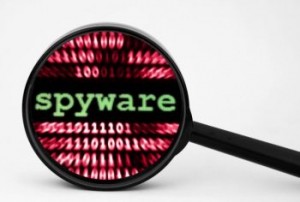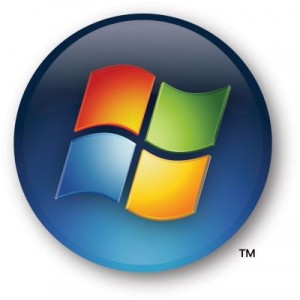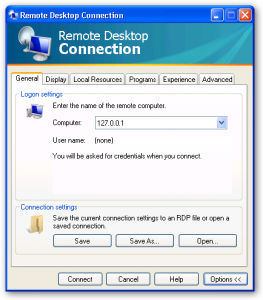
Unsolicited email, most commonly referred to as “spam” can be one of the most daunting problems to deal with in computer networks. It is the modern equivalent to receiving paper junk mail at your home or business. You didn’t ask for it, or want it, but once it starts it doesn’t stop!
At home, with physical mail, junk mail is usually easily sorted out because the quantity of it is relatively limited. With computers however, because of the low cost to distribute it, no postage or paper involved, the quantity that can be sent can quickly grow out of control.
 Most people automatically assume that the best way to deal with it is to filter it out, just as you would do at home with your physical mail. The problem of course, is that the quantity of spam is usually too large to filter by hand. As such, most people look for software or hardware to do the job for them.
Most people automatically assume that the best way to deal with it is to filter it out, just as you would do at home with your physical mail. The problem of course, is that the quantity of spam is usually too large to filter by hand. As such, most people look for software or hardware to do the job for them.
Unfortunately, software and hardware spam filters or spam blocking solutions are not as efficient as the human brain. As a result, filtering frequently will miss some spam, and likewise misidentify good emails as junk emails (false positives). False positives then would require you to look through the spam folder your filter moved it to, which, if you think about it, really defeats the purpose of the filtering software in the first place. Not an ideal situation.
Filtering is a little like cutting weeds in your garden. You can cut them out but they will continue to grow back because you didn’t pull out the roots! This then begs the question: How do you pull out the roots of the weed we call spam?
It All Starts With the Wetware (Your Brain)
If you really want to prevent spam, and not have a continual fight with it, you have to change your behavior. Unfortunately, the spammers know human behavior pretty well and take advantage of it at every turn.
Consider that there are two reasons to have email.
- To collaborate/communicate with people you already know for either personal or business purposes.
- To communicate with people you don’t currently know in hopes of generating new business, or new opportunities that could benefit us in some way either personally or professionally.
Number 1, rarely gets us in trouble. It is Number 2 that puts us the spammer’s radar!
The personal behaviors we engage in that most commonly relate to number 2, involve things like:
- Placing our email addresses on business cards
- Placing our email on websites
- Using our email to register with/for an online service.
On the surface these all sound pretty innocuous, and for the most part they are, until you start to expand from those points and see the bigger picture.
BUSINESS CARDS
We all want to do more business! Giving people multiple ways to reach us generally translates to more opportunities to make a sale. Including our email on a business card is naturally a smart thing to do from this perspective and is a common practice that is expected. This is not a problem so far.
Now ask yourself:
- How do I handle my business cards?
- Do I only give them to people I physically meet or do I try to spread them around everywhere possible?
Most do the later and that is where we can get into trouble.
Consider those restaurants with the glass fishbowls that say:
“Drop your card, and you may win a Free Lunch!”
Ask yourself:
- Is anything really ever free?
- Why do they want your business cards anyhow?
If you just realized it is for email harvesting, you guessed right! You knowingly supply your email when you engage in something so seemingly harmless. You just asked for spam and didn’t even know it!
Take a good look the next time you see one and most likely there is a small label somewhere on it that says you agree to be added to their mailing list! Some don’t even tell you this though.
The same problem can arise from pinning your business cards to a bulletin board, or placing them in one of those multi-card “business centers” you see hanging on the wall in some commercial establishments.
WEBSITES
Your Company’s Website:
Placing your email on a website seems like it should make sense, and in the past it did. Then the very same technology that allows search engines to aid us in finding the websites we are looking for became the tool of spammers too!
Bots or Crawlers can be set into motion to electronically “read” websites scanning for emails to harvest for a spamming list. When used for this purpose they are called Spambots.
With your own website that means don’t list your email addresses directly. If you must list them at least use creative measures that make it more difficult for bots to harvest your emails. Preferably use web forms that do not openly expose your emails and instead embed them in a form processing management solution not visible to a spambot.
Additionally, limiting the use of full names of individuals on your website will limit the chances of email guessing programs and overly ambitious sales people too!
Social Networking and Commentary Sites:
Consider that email harvesting is not just limited to your company website, but also any website you may participate in, including commenting on blogs, discussion forums, etc. If you post it (your email), the spam will come!
Along the same lines profiles on discussion forums, AOL, social networking websites, etc. can also be a source that spammers can harvest your email from! When using such services be sure to protect your profile and limit what others can see about you from your profile. If you don’t, your email will be ripe for the picking for spammers.
Selling Sites/Auction Sites:
By now it should be all too obvious, but listing your email openly on any website is just begging for trouble. This would also include places like craigslist and eBay.
Free Offer/Contest Sites:
Clicking on banner ads for “free” coupons, products, services, or anything for that matter can be an extremely bad decision. “Free” is rarely free!
Often such activities send spyware or viruses to your computer. Likewise, directly visiting sites that offer you something for “free” and are considered reputable, (think Publishers Clearing House Sweepstakes entries) are not the place to be investing your time if you want to avoid spam.
You can be sure that the form you’re filling out that asked for your email address is collecting it for their own mailing list or worse looking to sell your email address to somebody who will spam you later, or perhaps both.
Also note that being on one list opens the door for that list to be sold to other lists! The problem can quickly multiply!
Registrations for Downloads:
Along the same lines, sites where you have to fill out a form to download something often ask for your email or require you to supply your email address for the same reasons.
You may be starting to realize that what you consider spam, can both come from sources you never signed up for and from sources that legitimately gathered your information and suckered you into receiving their emails too!
HOW TO STOP/PREVENT THE MADNESS
If you’re willing to commit to control how you handle your email address then there is hope for stopping/preventing the spammers and reducing or eliminating the need for expensive spam filter/spam blocker solutions.
If you are already overloaded with spam and you want it to stop, CHANGE YOUR EMAIL ADDRESS!
It may seem like a pain to do, but more than likely you’ll have a much easier time telling the people you expect emails from your address has changed, than stopping or filtering out the spam barrage you are currently dealing with.
Once you have an unpublished address you can now follow these tips to prevent spammers from getting to you:
- DO NOT leave business cards in fishbowls in restaurants, on public cork boards, on multi-card business center advertising holders. If you want to do so, have separate cards made that do not include your email address. Then be diligent to protect it by making sure you remember which card you are posting publically!
- DO NOT list your email address on your company website. Rely on forms that mask your email.
- DO NOT provide your REAL email address on ANY website form requesting it, where a download or “free” offer is provided. If you must use the site, or need the download, and you are required to provide an email, then have an alternate DECOY email to use for such purposes instead. Expect this DECOY email to receive spams and only use it to view the details sent regarding the download or offer you are interested in. Hotmail, Yahoo, or Gmail are reasonable free options to use to create an email account that you don’t care about, but that will allow you to complete the task without causing your REAL email to get spammed. Just remember to clean out your decoy email’s inbox once in awhile, or at least before you submit it on a form.
- DO NOT ever post your email address on a discussion forum or online chat for the world to see.
- DO NOT ever post your email on craigslist.com, eBay, Usenet forums or similar sales/exchange sites for the public to see. Most services like this allow your email to be hidden and can provide a generic email address through their site which will forward to your REAL private email address.
- DO NOT allow your email to be publiclly displayed on any social networking/dating or chat sites (Facebook, MySpace, etc).
- DO make sure to turn on any profile blocking security measures offered on forums, AOL, social networking sites, etc. to prevent your email from being obtainable.
- DO treat your email like it is PERSONAL INFORMATION and do not share it openly with anyone you do not want to correspond with. When you open it to the world, the world is likely to email you!
- If you do end up with spam, DO NOT reply to it or click an “unsubscribe” option. Most likely doing so will only confirm to the spammer your email address is live (especially if they are using an email guessing program) and you”ll most likely end up with more spam.
- DO exercise caution when visiting unknown websites!
- DO follow good common sense measures to protect your computer from viruses and spyware as even these can result in spam, if not to your email, to the emails of the people in your address book!
- Use business email accounts for business and personal email accounts for personal matters.
Remember, controlling how we use emails and who we provide them to will go a long way toward avoiding spam and reducing the need for costly spam filters and spam blocking solutions.
Charles McElhose Jr. is the founder and CEO of Craftix Technology Solutions, LLC an information technology firm that provides computer, networking, and website services in the Gettysburg and Baltimore Metropolitan areas.




